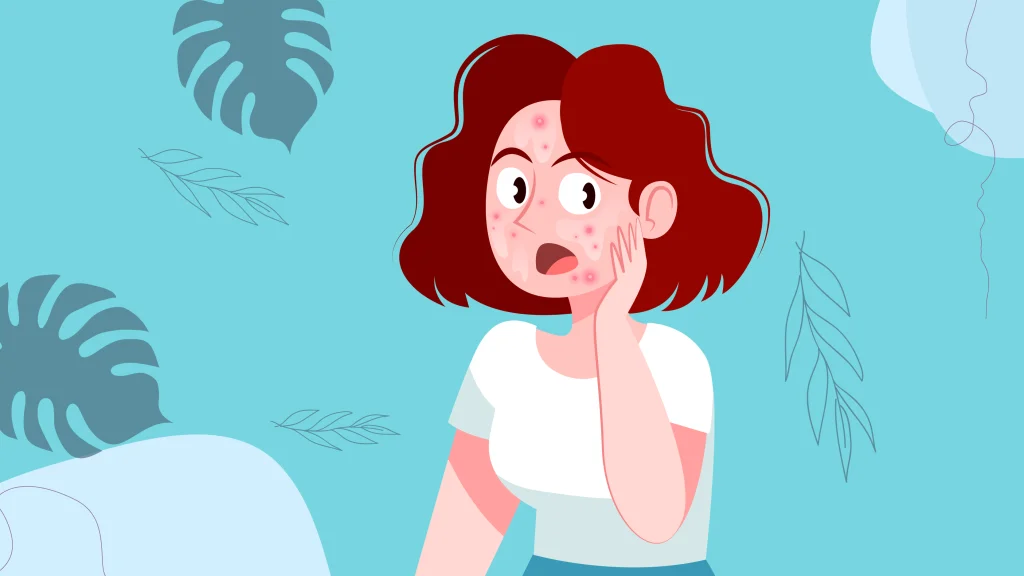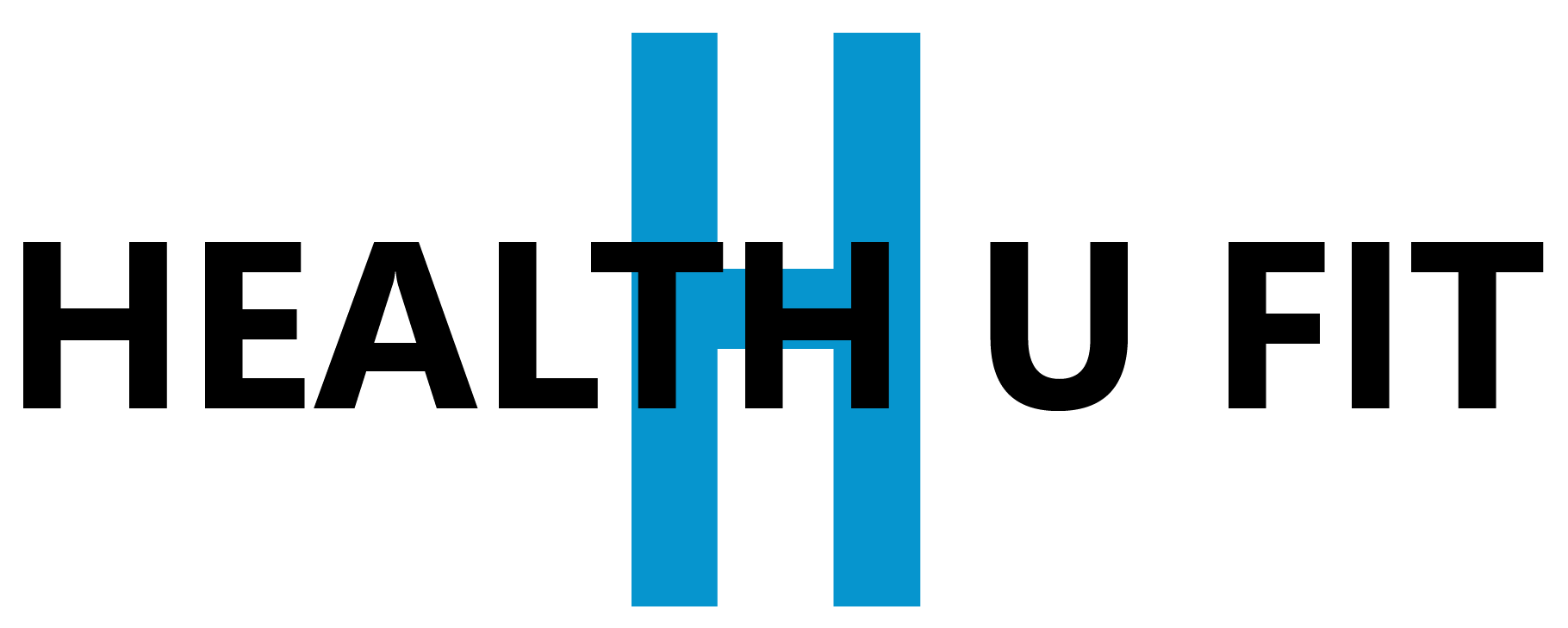
What are Pimples?
A Pimple is a tiny pustule or papule on the skin. Pimples, often known as spots or zits, are a kind of acne. They are most common during puberty, but they can develop at any age.
Read More – Ways For Men To Improve Sexual Performance
Hormone production varies throughout puberty. The sebaceous glands, which are positioned at the base of hair follicles, may become hyperactive as a result of this. As a result, pimples are more likely to appear throughout adolescence and around menstruation in women.
Pimples are most commonly found on the face, back, chest, and shoulders. This is due to the abundance of sebaceous glands in particular regions of the skin.
What are the Types of Pimples?
- Whiteheads: These are little pimples that remain under the skin and are also known as a closed comedo. They take the form of a tiny, flesh-colored papule.
- Blackheads: Also known as an open comedo, these are visible on the skin’s surface. Because of the oxidation of melanin, the skin’s pigment, they are black or dark brown. Because of their color, some individuals wrongly assume they are caused by dirt and clean their cheeks excessively. Scrubbing is ineffective. It might irritate the skin and cause additional issues.
- Papules: They are tiny, solid, spherical lumps that protrude from the skin. They are frequently pink.
- Pustules: Pustules are pimples that contain pus. They are readily visible on the skin’s surface. The foundation is red, the bottom is red, and the pus is on top.
- Nodules: They are bigger than papules and have a similar structure. They are painful and deeply entrenched in the skin.
- Cysts: These are readily visible on the skin’s surface. They are frequently painful and loaded with pus. Scars are frequently caused by cysts.
Causes of Pimples:
Pimples and Sebaceous Glands
The sebaceous glands are small skin glands that release sebum, a waxy or oily substance that moisturizes and lubricates the skin and hair. Sebaceous glands are present throughout the body, save in the palms of our hands and soles of our feet and inside the pores of our skin. The face and scalp have more sebaceous glands than the rest of the body. As the glands inside the pores create sebum, new skin cells are continually formed, and the outer layers of skin are shed. Dead skin cells are not always shed. They linger in the pores and become cemented together by the sticky sebum, producing pore blockage. Pore obstruction is more common.
Bacterial Contamination
Where sebum and dead skin cells gather and plug a pore, this promotes the growth of unwanted bacteria, such as Propionibacterium acnes (P. acnes), a slow-growing bacterium associated with acne. Propionibacterium acnes lives on our skin innocuously, but when the conditions are right, it may multiply fast and become a problem. The slow-growing bacteria feed on sebum and create an immune-stimulating chemical. This causes skin irritation and spots. Pimples, while associated with bacterial illnesses, are not communicable. Pimples cannot be transmitted from one person to another.
Infections Caused by Yeast
Yeast infections have also been connected to acne outbreaks. Pityrosporum, also known as Malassezia or folliculitis, occurs when pittosporum yeast penetrates and grows in the hair follicles, causing an unpleasant eruption of small, painful, spherical pimples that mimic acne. It is most common on the upper chest, shoulders, and upper back, although it can also appear on the face. Most individuals have this yeast on their skin, but if it becomes excessive, it can create problems. It may happen to both men and women in their twenties and thirties. Humid settings, synthetic fiber clothing, and the use of greasy skin creams can all exacerbate this. The disorder is more frequent in teens, most likely due to increased sebaceous gland activity.
Sensitivity to Testosterone
Acne is linked to greater levels of testosterone and other androgens, which are found in both males and females, due to the hormone’s capacity to activate sebaceous glands, resulting in an excess of sebum production and an increased probability of blocked pores and acne formation. This hormonal effect adds to the complexities of acne, a skin disorder influenced by a variety of variables such as heredity, hormone cycles, and environmental triggers.
While increased testosterone levels can play a role, they are not the only driver of acne, and not all men with greater testosterone levels will develop the problem. Dermatologists may examine hormonal therapy to treat hormonally driven acne, regulate hormone levels, and reduce sebum production, although effective treatment is seldom available.
Dietary Factors
Because vitamins A, D, and E are known to have a role in maintaining good skin, an appropriate intake of these vitamins may help prevent acne. Acne has been linked to milk intake. If milk does have a role, it might be because of the hormones included in milk. However, the results have been inconclusive.
Although it has been claimed that sugar and chocolate cause acne, study data does not support this. A low-glycemic index (GI) diet has been linked in studies to lower levels of insulin in the blood, lower levels of androgen, and a decreased risk of acne. However, the findings remain inconclusive. Furthermore, adopting a low-GI diet may prevent people from eating enough whole grains and other complex carbohydrates.
How to Get Rid of Pimples:
- Use Apple Cider Vinegar.
Pros: Low cost, simple to find, reduces the look of acne scars.
Cons: May cause skin irritation.
Fermenting apple cider, or the unfiltered liquid from crushed apples, yields apple cider vinegar. Research has shown that it, like other vinegars, can combat a wide range of microorganisms. Citric acid, for example, is found in apple cider vinegar. Citric acid, in combination with zinc oxide, has been shown in research from 2016 to destroy P. acne. According to a 2017 study, the lactic acid in apple cider vinegar may also help to reduce the look of acne scars. While some apple cider vinegar components may aid with acne, there is presently no evidence to support its usage for this reason.
- Utilize a Zinc Supplement.
Pros: Scientific studies back it up with a wide range of advantages.
Cons: May irritate the stomach or intestines; not useful when administered topically.
Zinc is a mineral that is necessary for cell development, hormone synthesis, metabolism, and immunological function. In comparison to other natural acne remedies, it has received comparatively little research. According to a meta-analysis published in 2020, individuals who received zinc treatment saw substantial reductions in the number of inflammatory blemishes when compared to those who did not. The suggested safe upper limit for zinc is 40 mg per day, so unless you’re under the guidance of a medical expert, it’s is usually, be better not to exceed that quantity. Excessive zinc consumption might result in stomach discomfort and intestinal inflammation.
- Create a Honey and Cinnamon Face Mask.
Pros: Antimicrobial, simple to prepare.
Cons: Little research to back up the claims.
According to a 2017 source, the combination of honey and cinnamon bark extract has antibacterial properties against P. acnes. According to 2020 research, honey can inhibit or destroy the growth of P. acnes on its own. This conclusion, however, does not necessarily imply that honey is a good acne treatment. According to a 2016 source with 136 acne patients, adding honey to the skin after using antibacterial soap was no more successful at curing acne than using the soap alone. While honey and cinnamon’s anti-inflammatory and antibacterial qualities may help with acne, additional study is needed.
- Tea Tree Oil can be used to Treat Certain Areas
Pros: Does not require much product, may be kept on overnight, natural.
Cons: Drying essential oils are not FDA-approved.
Tea tree oil is an essential oil derived from the leaves of Melaleuca alternifolia, a tiny Australian tree. According to 2018 research by a reliable source, using tea tree oil on the skin can help decrease acne. In a modest 2019 research study, participants using a tea tree oil ointment for acne had less dry skin and discomfort when compared to benzoyl peroxide, according to Trusted Source. They were also happy with the therapy. A 2017 study found that, according to a reliable source, tea tree oil may be an effective alternative to topical and oral antibiotics, which might induce bacterial resistance if taken for an extended period.
- Aloe Vera Moisturizer
Pros: Natural, available in a variety of goods, and may be blended with other components.
Cons: There haven’t been many studies to back up the claims, and many products contain additives.
Aloe vera is a tropical plant that produces a transparent gel from its leaves. Lotions, creams, ointments, and soaps frequently include gel. According to a study from 2018, it is widely used to treat abrasions, rashes, burns, wounds, and skin inflammation.
Aloe vera contains salicylic acid and sulfur, both of which are commonly used to treat acne. According to 2017 research, using salicylic acid on the skin lowers acne. According to 2018 research from Trusted Source, when mixed with additional ingredients such as tretinoin cream or tea tree oil, aloe vera gel may help with acne.
Conclusion
Finally, Acne is a widespread skin disorder marked by the appearance of pimples, blackheads, whiteheads, and other imperfections. Excess sebum production, blocked hair follicles, bacterial overgrowth, hormone changes, heredity, and environmental triggers are all factors that contribute to acne.
Read More – Various Health Benefits Of Ketogenic Diet
While acne can be bothersome and difficult to treat, there are several methods for managing and reducing its incidence. Maintaining a regular skincare regimen, including gentle cleansing and exfoliation, using non-comedogenic products, and shielding the skin from excessive sun exposure, are all effective measures. Hormonal therapy advised by dermatologists may be effective for those with hormonally driven acne. Lifestyle variables such as stress management, eating a well-balanced diet, and staying hydrated can all help to improve skin health.
What are Pimples?
A Pimple is a tiny pustule or papule on the skin. Pimples, often known as spots or zits, are a kind of acne.
What are the Types of Pimples?
Whiteheads, Blackheads, Papules, Pustules, Nodules, Cysts are the Types of Pimples.
Read More – Benefits Of Apple Cider Vinegar



